A survey of wheat fields this week in southeast and south-central Nebraska showed most to be in good to excellent condition (Figure 1). Stripe rust (Figure 2) was confirmed in 11 counties in southeast and south-central Nebraska (Figure 3). The disease was in its early stages of development, with trace to low levels of incidence and severity, and was found in the mid and upper canopy including the flag leaf. There was more stripe rust in northern Saline County, where there was a rainfall event on May 6, compared to the rest of Saline, Jefferson and Gage counties. Leaf rust was not observed in any of the surveyed fields. Growth stage in the majority of fields surveyed ranged from boot to heads just starting to emerge, but in a few fields in Jefferson County, heads were fully emerged but not flowering yet.
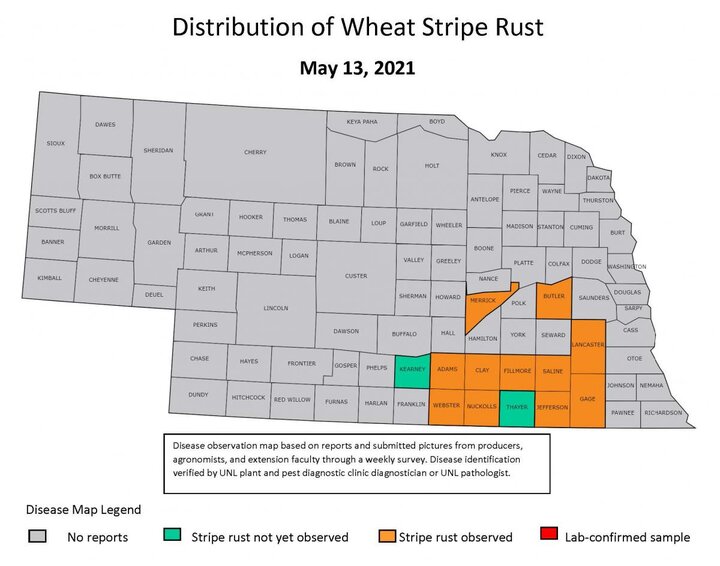
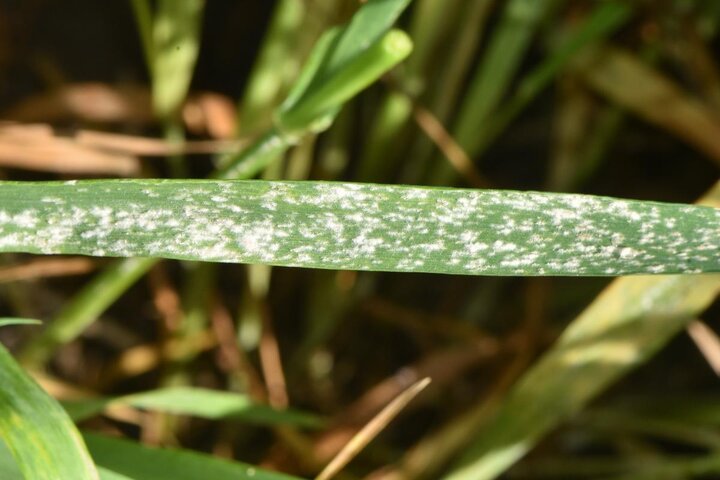
Other diseases observed were powdery mildew at moderate to high levels in some fields (Figure 4), fungal leaf spots (Septoria and tan spot) at moderate levels (Figure 5), and barley yellow dwarf (Figure 6) and wheat streak mosaic (Figure 7), both at trace to low levels.
View the current distribution of wheat stripe rust and wheat leaf rust in Nebraska.
Reports from Southern States
Severe stripe rust is reported to have been observed last week in parts of Oklahoma. In Kansas, stripe rust is most active in the central and southeastern parts of the state. A pocket of severe stripe rust has been observed in northeast Kansas, which is close to southeast Nebraska. Leaf rust has been detected at low levels in several counties in Kansas.
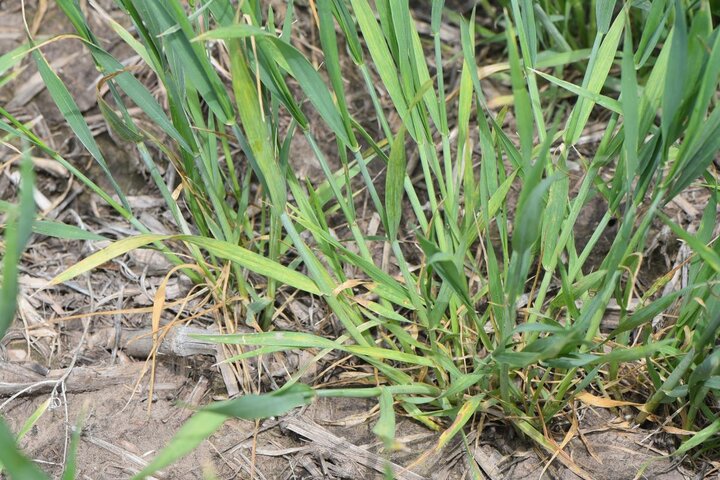
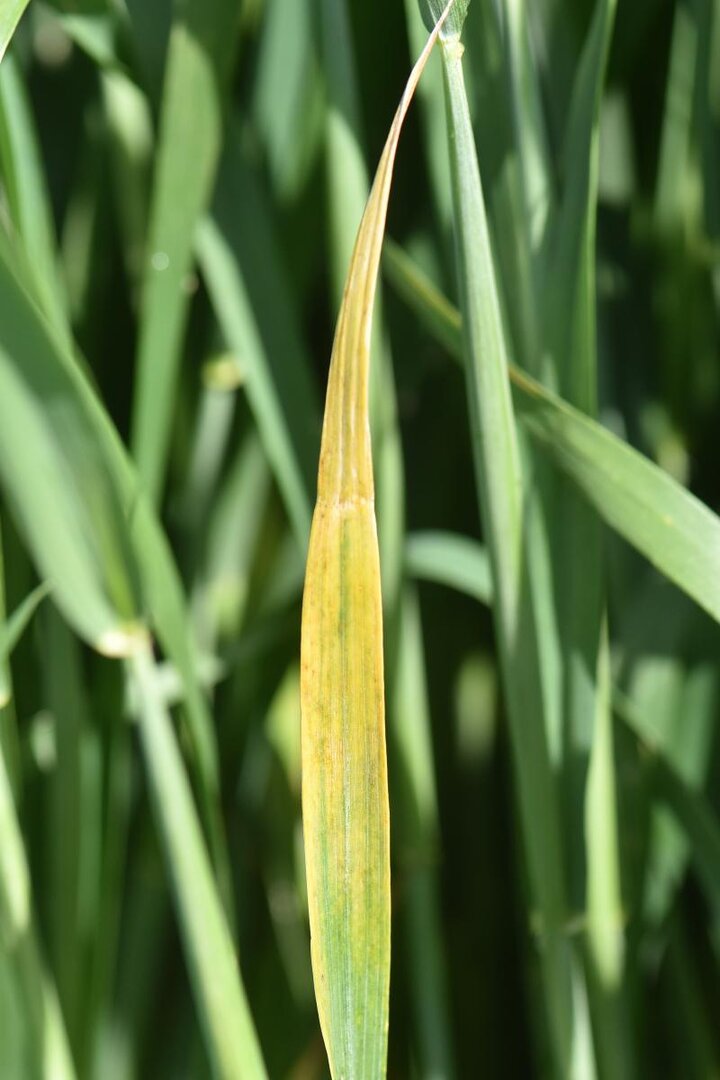
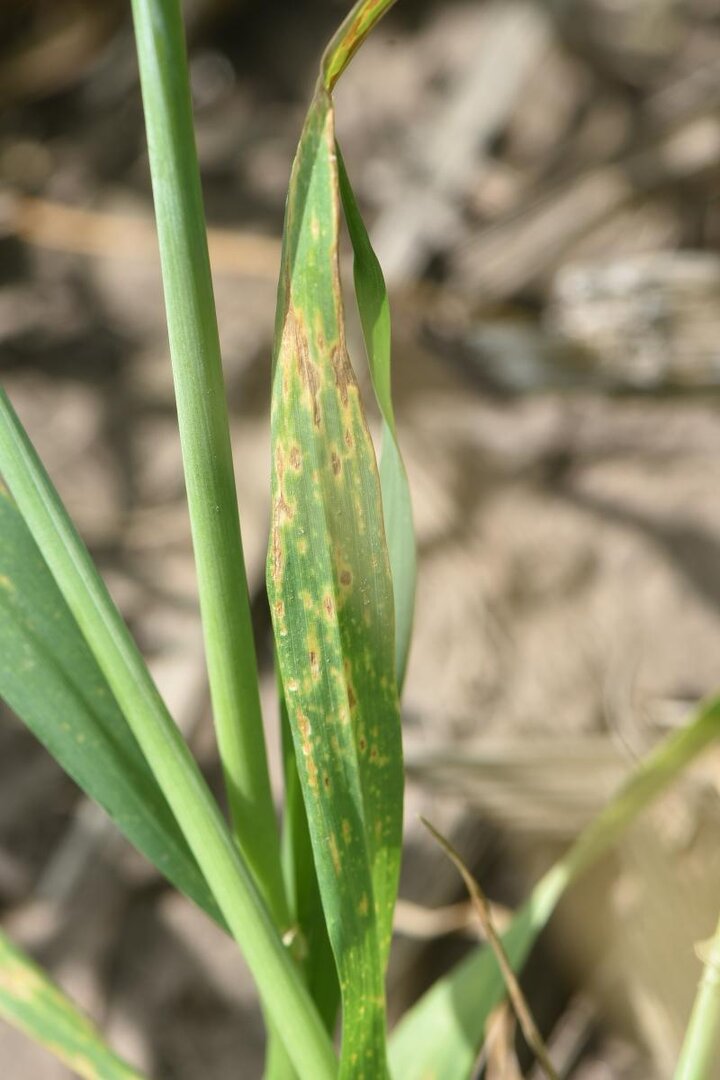
Management
Stripe rust is favored by moisture and cool to moderate temperatures. If areas where stripe rust has been detected receive rainfall, the disease can progress rapidly. The detection of stripe rust in 11 counties over a relatively short period of time indicates the potential for the disease to become widespread in the state. It is recommended that a fungicide be applied to protect the flag leaf. Fungicides that control stripe rust will also effectively control fungal leaf spot diseases. Virus diseases cannot be controlled once they occur.

